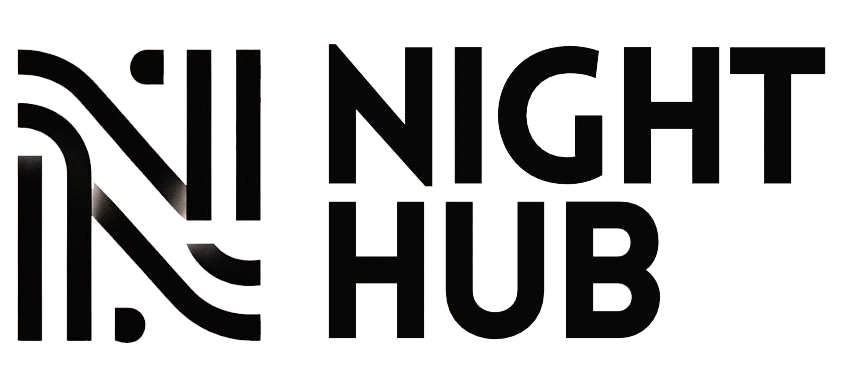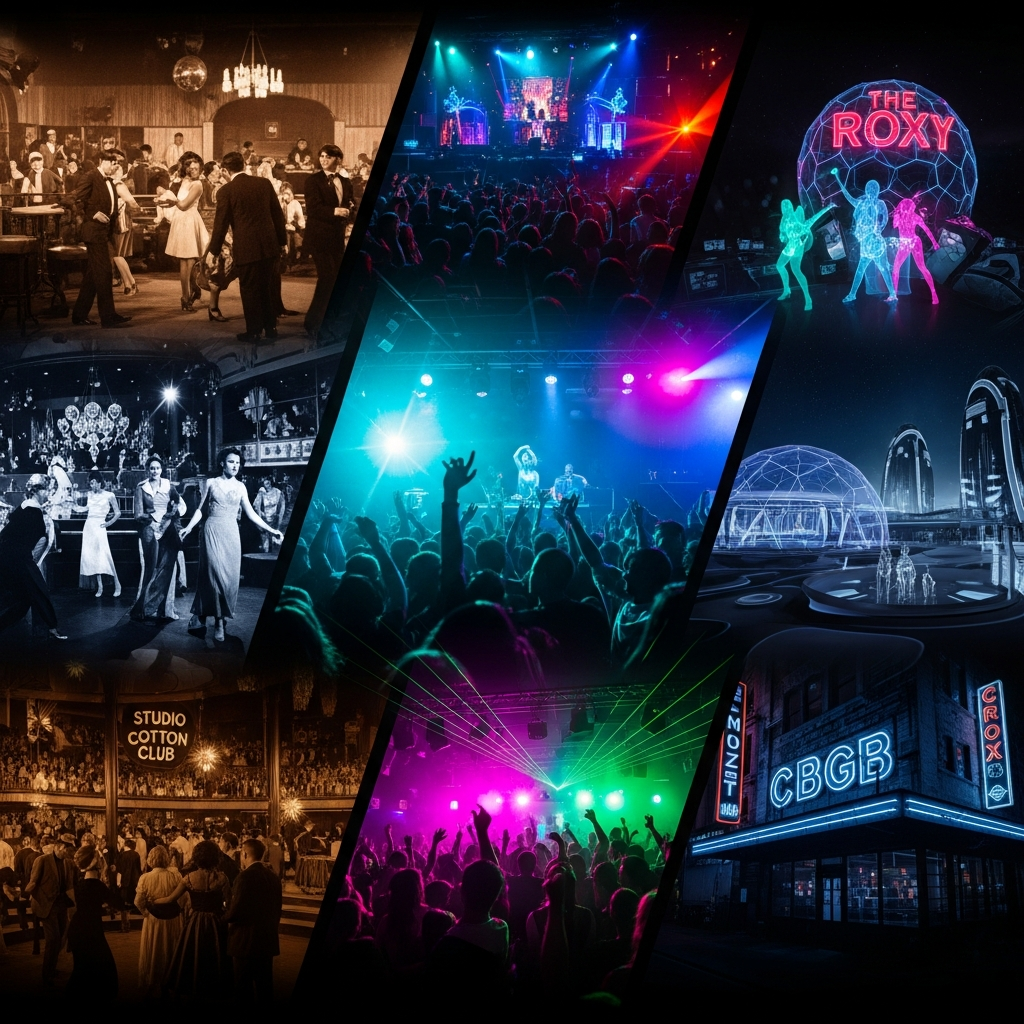6 legendary nightlife venues shaped how the world parties, turning dance floors into cultural launchpads where music, style, and community collided in electric ways that still echo today. These clubs didn’t just host nights out—they set trends, defined eras, and showed what’s possible when the lights drop and the sound system roars to life. Some became global icons, while others burned bright and vanished, but all left a blueprint powered by place, timing, vision, and that unmistakable late-night magic.
1. THE WAREHOUSE CHICAGO: Where House Music Was Born
While Studio 54 was making headlines in Manhattan, something equally revolutionary was happening in more underground spaces. The Warehouse in Chicago, which operated from 1977 to 1982, became the cradle of house music. [1]
DJ Frankie Knuckles, the venue’s resident DJ, was instrumental in creating a new sound. In 1977, when Knuckles accepted an offer to become the resident DJ at the Warehouse (located in Chicago’s industrial West Side), the club was still relatively unknown. [2] What happened next transformed music forever.
Knuckles had begun his career alongside future Paradise Garage resident DJ Larry Levan at the Continental Baths in New York during the 1970s, before moving to Chicago. [3] At the Warehouse, Knuckles began experimenting with edits of songs, extending intros and breaks, and adding new beats to invigorate old favorites. [3] These experiments in “DJ alchemy” at the Warehouse laid the groundwork for the emergence of house music. [3]
Knuckles’s DJ sets at the Warehouse attracted crowds of up to 2,000 people, primarily from the Black and gay communities. [2] The music that Knuckles played there—which became known as “house” music, named after the club—would eventually spread around the world and become one of the most influential music genres of modern times. [3] [2]
Patrons of the Warehouse began using the word “house” around 1980-1981. [3] Young DJs like Farley, Jessie Saunders, and Chip E., who frequented the club, began organizing their parties at various bars and lounges across Chicago, spreading the Warehouse sound. [3]
Knuckles remained at the Warehouse until November 1982, when he opened his club, the Power Plant, where he continued to push boundaries by incorporating Chicago’s first “beat tracks”—bare drum machine jams—and the first house tracks he produced with Jamie Principle for the Trax and D.J. International labels. [3]
The Warehouse proved that legendary nightlife venues don’t need celebrity clientele or mainstream attention. The Warehouse was legendary because of the music played there, the community it served, and the cultural innovations that emerged from its dance floor.
2. PARADISE GARAGE: The Cathedral of Dance Music
Paradise Garage, a place destined to become legendary, was born at 84 King Street in Manhattan’s SoHo neighborhood, in the heart of New York. [4] Sole proprietor Michael Brody founded this 10,000 square-foot club, which operated from 1977 to 1987. [4]
The name Paradise Garage derived from the building’s origins as an early 20th-century automobile parking structure. [4] After a year of renovation that began in 1977 (when the space was called “84 King Street Garage”), it officially became Paradise Garage on January 28, 1978.[4]
Among the enhancements that contributed to its status as one of the legendary nightlife venues was a sprung dance floor and a custom sound system developed by Richard Long of Richard Long & Associates (RLA). The layout of the club’s main room and dance floor was explicitly designed around this sound system, which at the time was considered the best in New York City and was described by François Kevorkian as a “temple to music.” [4]
Larry Levan: The Visionary of Sound
Paradise Garage became a legend primarily due to its resident DJ, Larry Levan. Born in Brooklyn on July 20, 1954, Levan grew up immersed in disco and Black music culture. [5] He showed innate talent for DJing, able to blend diverse genres—soul, funk, disco, and new wave—into a single sonic experience. [6]
Levan didn’t just “put on records”: he built emotional journeys, modulated the atmosphere, and played with the frequencies of the revolutionary sound system designed by Richard Long. [6] Paradise Garage quickly became a landmark for the LGBTQ+ and African American communities, a safe space to freely express oneself and celebrate diversity. [4] There was no discrimination, only the shared passion for music and dance. [6]
Levan’s decade-long residency at Paradise Garage demonstrated that DJing could be a true art form. [5] The club operated during those 11 years with a 48-hour party in September 1987, weeks before club owner Michael Brody died from AIDS-related complications. [5]
Levan passed away on November 8, 1992, but his legacy as a pioneer of legendary nightlife venues remained intact. Many consider him the spiritual father of house music and one of the most influential DJs of all time. Paradise Garage was not just a venue; it was a legendary nightlife venue that marked the history of electronic music and urban culture worldwide.
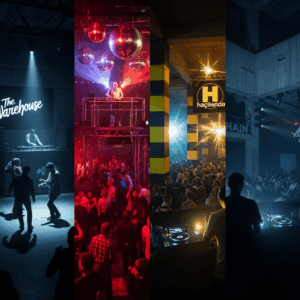
3. THE HAÇIENDA MANCHESTER: When Factory Records Entered Clubbing
The Haçienda in Manchester, England, represents an unusual case study in nightlife history. Opened in May 1982 by Factory Records and New Order, the club was initially a commercial failure. [7] [8]
The building was transformed by a world-renowned industrial designer, Ben Kelly, with a revolutionary aesthetic: exposed pipes, steel columns, and hazard-stripe painted walls, which influenced club design around the world. [8]
The Rise of Acid House and the Madchester Scene
The Haçienda’s true transformation began in the late 1980s when acid house music arrived in Manchester. In July 1988, the Haçienda hosted an acid house night called “Hot,” organized by DJs Pickering and Jon Dasilva. [7] This event was the catalyst that transformed the club into the epicenter of the UK’s acid house scene.
With the introduction of MDMA (a psychedelic “designer drug” used to extend dancing capacity) in Manchester, the Haçienda became fertile ground for the development of “baggy/Madchester,” a new movement combining psychedelia with jangle pop and acid house. [9] The Madchester scene was a psychedelic collision of indie rock and dance culture that redefined British music at the dawn of the 1990s, spearheaded by bands like The Stone Roses and Happy Mondays. [10]
Challenges and Legacy
Despite hosting some of Manchester’s most legendary concerts and having an entire genre develop on its dance floor, the Haçienda closed its doors in 1997 after nearly 15 years of innovation. [9] By that time, the club had also attracted Manchester’s criminal underworld. The openness that made it an experimental art space in the early 1980s was now its biggest weakness. [10]
Although the original building was demolished and replaced by luxury apartments, the Haçienda remains an indelible part of Manchester’s identity and cultural heritage. [10] The Haçienda pioneered the concept of the superclub and established the template for nightlife as a form of cultural expression, serving as the central hub of the Acid House movement and the Madchester scene.
The Haçienda exemplified the ability of legendary nightlife venues to operate at a financial deficit, all the while maintaining their immense cultural significance.
4. BERGHAIN: The Cathedral of Techno
Berghain in Berlin stands as a quintessential example of legendary nightlife venues. Opened in 2004 in a former East Berlin power station, Berghain has become synonymous with serious techno music and marathon parties that can last an entire weekend. [11]
Berghain traces its roots to 1990s Berlin. In 1990, owners Norbert Thormann and Michael Teufele organized hardcore techno parties in British railway bunkers, evolving into the influential gay disco Ostgut by 1998. [11] After Ostgut closed in 2003, the founders opened Berghain in a converted heat and power station in 2004, blending techno music with sexual freedom. [11]
The name “Berghain” has been described as evocative of the club’s “post-1989” identity. It is a portmanteau of the two city districts that flank the building’s north and south sides: Friedrichs*hain* (formerly East Berlin) and Kreuz*berg* (formerly West Berlin). [11]
The Panorama Bar opened in October 2004, and Berghain opened in December. [11] Since the venue’s founding, the resident DJs at Berghain have crafted a unique techno sound. This is an unmatched gig for DJs because of the vast space, the crystal-clear Function One system with its powerful bass, the loyal crowds, and most importantly, the 14-hour sets. [12]
The Mystique of Exclusivity
The club’s notoriously strict entry policy, which bans phones and covers cameras with stickers, and its laid-back atmosphere have created a mystique that draws in electronic music fans from all over the world. [11] [13] What makes Berghain particularly intriguing is how it has operated within post-reunification Berlin, a city where cheap rents and abandoned industrial spaces created perfect conditions for experimental nightlife. [14]
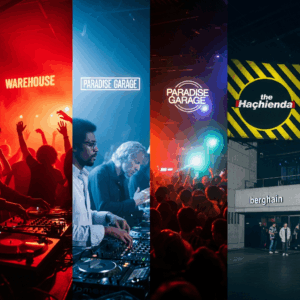
Since its opening in 2008, Berghain has consistently been ranked among the world’s best clubs in DJ Magazine’s Top 100, reaching #1 in 2009. [11] The International Dance Music Awards has repeatedly nominated Berghain as Best Global Club.
Berghain’s influence extends beyond the realm of techno music. The club’s focus on fostering an accepting environment has influenced how venues around the world perceive inclusivity, safety, and club culture, allowing individuals to express themselves freely.
5. MINISTRY OF SOUND: The Birth of the Superclub
Ministry of Sound in London, founded on September 21, 1991, pioneered the concept of the “superclub”—a large-scale venue with multiple rooms, world-class sound systems, and international DJ bookings. [15]
The club was located in Elephant & Castle, where it had been an abandoned bus garage overrun with pigeons. For almost two years, founder Justin Berkmann and two business partners worked nonstop to build a nightclub that specialized in house music, drawing inspiration from clubs in Detroit, New York, and Chicago. [17]
What distinguished Ministry of Sound was its business model. [15] The club evolved into a global brand, releasing compilation albums, hosting radio shows, and organizing club nights around the world. [15] This corporate approach to nightlife was controversial among purists but proved enormously profitable commercially. [15]
At first, the club only had a juice bar and no license to sell alcohol. [16] The club’s sound system was one of the best in the world, and it is now even more powerful. This made up for the lack of spirits. The sound, louder than a Concorde taking off at about 156 dB, was so potent that it could be fatal in the wrong hands. Luckily, to avoid distortion, it only operated at 40% of its full power output. [16]
Ministry of Sound exemplified how legendary nightlife venues could transform nightlife into a profitable industry. The club’s foray into music production and global branding illustrated to other venues that there were diverse revenue streams available beyond just cover charges and drinks. This innovative model not only shaped the evolution of the nightlife industry, but it also established a precedent for future legendary nightlife venues, thereby influencing the landscape in both positive and negative ways.
6. FABRIC: The Battle for London’s Nightlife
Fabric, which opened in London in 1999, became famous not only for its music but also for its struggle for survival. The club was temporarily closed in 2016 because of drug-related deaths, which sparked a broader discussion about nightlife, drug policy, and urban development. [18]
Islington Council revoked Fabric’s license on September 7, 2016. [17] The deaths of two individuals on June 25 and August 6 from drug use on the property appear to have been the catalyst for Fabric’s suspension and eventual closure. [19]. However, recently made public council documents apparently revealed that the closure of Fabric was a well-planned event that was manipulated by a financially strapped council using the police as pawns. [19].
The club’s initial closure resulted in the loss of 250 jobs. [20] After the world-famous nightclub’s license was revoked by Islington Council, hundreds of artists and supporters expressed their sadness and frustration at the club’s closure. [20]. The electronic music duo Chase and Status tweeted passionately: “Our culture has been ripped away with the closure of Fabric and every club with serious history and importance in London [20].”
In 2017, a passionate public campaign rallied support from DJs, musicians, and politicians to reopen the legendary nightlife venue Fabric. This pivotal moment brought to light the ongoing challenges faced by nightlife in many cities, such as gentrification and noise complaints resulting from new residential developments. Fabric’s survival emerged as a powerful symbol of resistance against the forces that threaten urban nightlife culture, reinforcing its status as a legendary venue that embodies the spirit of community and creativity in the face of adversity.
Lessons from Legendary Nightlife Venues
Looking at these examples, several commonalities emerge. Legendary nightlife venues usually offer:
- Exceptional sound systems and production values
- Inclusive communities where people feel free to express themselves
- Innovative music or entertainment
- Distinctive atmospheres that cannot be replicated
- Strong identities that extend beyond their physical spaces
Additionally, timing is crucial.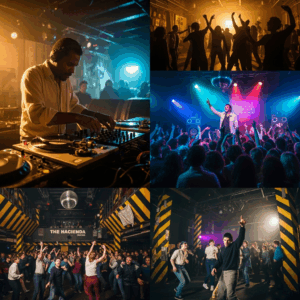
Many legendary nightlife venues opened at the perfect time to capture a cultural shift. Studio 54 opened at the height of disco’s popularity. The emergence of The Warehouse coincided with the demise of disco and the rise of house music. Berghain opened as Berlin established itself as a creative hub.
Location also plays a crucial role. Venues in cities with supportive nightlife policies, available industrial spaces, and critical masses of interested audiences have better chances of becoming legendary. This explains why cities like Berlin, London, and New York have produced so many important nightlife venues.
The Venues that Matter
Legendary nightlife venues and events throughout history have one thing in common: they provided spaces for something special to happen. Whether it was the birth of a new music genre, the formation of a community, or simply a perfect night that people will remember for decades, these places were important because they allowed for human connection and cultural expression.
Looking into the future, new legends will emerge. They will emerge from unexpected places, led by outstanding individuals who recognize that great nightlife is about more than just drinks and music. It is about creating meaningful experiences, thriving communities, and memorable moments.
SOURCES AND REFERENCES [1] Wikipedia - Frankie Knuckles (2003) [2] Wikipedia - Frankie Knuckles (2003) [3] Daily.redbullmusicacademy.com - Frankie Knuckles on the Birth of House Music (n.d.) [4] Wikipedia - Paradise Garage (2003) [5] Wikipedia - Larry Levan (2003) [6] IpiSellis.altervista.org - Larry Levan e la storia del Paradise Garage (2025) [7] Wikipedia—The Haçienda (2003) [8] Beyond-the-grooves.co.uk—How the Hacienda Changed the World (2025) [9] Impact89FM.org—The Haçienda | The Legacy of Madchester (2020) [10] Howlandechoes.com—The Hacienda: The Centre of Madchester (n.d.) [11] Wikipedia - Berghain (2006) [12] Artsandculture.google.com - Berghain: The King of Clubs (2023) [13] Instagram - Berghain (2025) [14] Papermag.com - Berghain: 36 Hours Inside The World's Most Exclusive (2022) [15] Ministry of Sound - History (2014) [16] Timeout.com - Ministry of Sound: Circa 91 (2013) [17] PremierInn.com - Ministry of Sound, London (2024) [18] Wikipedia - Fabric (club) (2005) [19] Independent.co.uk—'Operation Lenor' and the real reason Fabric was shut down (2016) [20] Londonist.com - Fabric Nightclub: Anger As Closes Permanently (n.d.)
